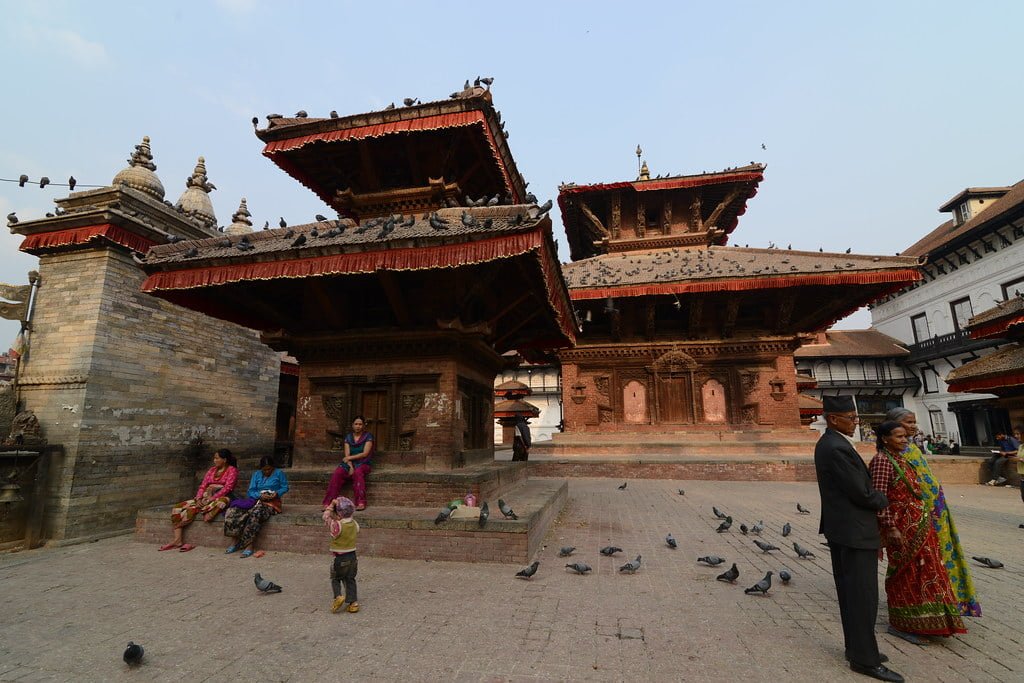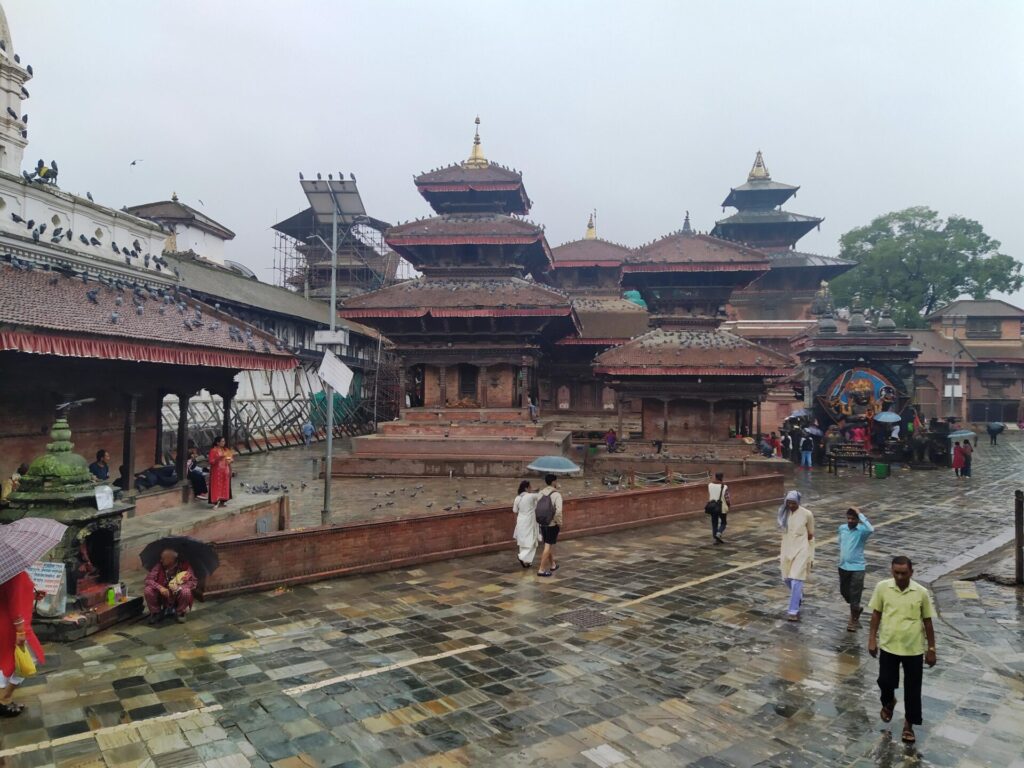Indrapur Temple: A Testament to Resilience and Restoration
The Indrapur Temple, located in the iconic Kathmandu Durbar Square, holds a significant place in Nepal’s architectural and cultural heritage. With its intricate carvings and stunning pagoda-style architecture, this temple has stood as a testament to the resilience and restoration efforts of the Nepalese people.
The temple, like many other structures in the Durbar Square, suffered extensive damage during the devastating earthquake that struck Nepal in April 2015. The earthquake, measuring 7.9 magnitudes, left the temple weak and vulnerable, threatening its existence and historical significance.
However, thanks to the dedicated efforts of the World Monuments Fund (WMF) and local professionals and artisans, the Indrapur Temple was successfully restored to its former glory. The restoration project, which began in 2002 as part of the integrated conservation of the Kathmandu Durbar Square, aimed to preserve and protect the architectural beauty of the temple.
The restoration process involved meticulous documentation, research, and conservation work. Skilled professionals and artisans were trained in international standards of architectural preservation, ensuring that the restoration efforts met the highest quality standards. The damaged masonry, sculptures, and fabrics of the temple were carefully repaired and restored, breathing new life into the ancient structure.
The completion of the restoration project in 2002 marked a significant milestone for the Indrapur Temple and the Kathmandu Durbar Square. It demonstrated the resilience of the Nepalese community and their commitment to preserving their rich cultural heritage. The temple now stands as a symbol of their determination to protect and honor their history.
Today, the Indrapur Temple, alongside other structures in the Durbar Square, welcomes visitors from around the world. While access to the entire square may be limited due to ongoing preservation efforts, specific parts of the Durbar Square, including the Indrapur Temple, can still be explored and appreciated by the public.
Historical Significance
The Indrapur Temple, located in Kathmandu Durbar Square, holds immense historical significance in Nepal. As one of the sacred temples in the square, it is a testament to the rich cultural heritage of the region.
Built in the pagoda style, the Indrapur Temple showcases the exquisite craftsmanship and architectural brilliance of the Newar artisans. The temple is dedicated to Lord Indra, the god of rain and thunder in Hindu mythology. It is believed that the temple was originally constructed during the Malla dynasty in the 14th century.
Over the centuries, the temple has witnessed various transformations and renovations. However, it faced significant damage during the devastating earthquake that struck Nepal in April 2015. The earthquake, measuring 7.9 magnitudes, weakened the structure of the Indrapur Temple, along with several other buildings and temples in the Durbar Square.
In response to the damage caused, the World Monuments Fund (WMF) took up the restoration and conservation of the Indrapur Temple. The WMF, along with local professionals and artisans, worked tirelessly to preserve the architectural integrity of the temple. The restoration efforts focused on repairing the damaged roofs, preserving the intricate wall art, and restoring the fabrics of the plinth and pavement.
Furthermore, the WMF provided training to Nepalese professionals and artisans in international standards of architectural documentation, research, and conservation. This not only ensured the successful restoration of the Indrapur Temple but also empowered the local community by imparting valuable skills and knowledge.

Restoration Efforts
The historic Kathmandu Durbar Square, located in the heart of the Kathmandu valley, has undergone significant restoration efforts in recent years. Recognizing the importance of preserving the cultural heritage and historic significance of the square, the government, along with the support of international organizations such as the World Monuments Fund (WMF), has been actively involved in the restoration and refurbishment of the square.
One of the major restoration projects took place in 2000, funded by the World Monuments Fund. The focus of this project was primarily on the three main temples of the square, all built in the pagoda style. These temples, namely the Indrapur Temple, the Narayan Temple, and the Jagannath Temple, had suffered damage over the years, particularly in their roofs.
To ensure the structural integrity of the temples, the roofs were rebuilt, incorporating state-of-the-art seismic strengthening measures. Additionally, a comprehensive program of documentation, masonry repairs, and conservation of architectural sculptures was undertaken. The damaged fabric on the plinth and surrounding pavement was also carefully restored.
A notable aspect of the restoration efforts was the emphasis placed on training Nepalese professionals and artisans in international standards of architectural documentation, research, and conservation. The World Monuments Fund played a crucial role in providing on-the-job training to the local team, empowering them with the skills and knowledge necessary for the preservation and maintenance of the historic structures.
The restoration of the Indrapur Temple was successfully completed in 2002, followed by the restoration of the Narayan Temple in 2003 and the Jagannath Temple in 2004. These efforts revitalized not only the physical structures of the square but also rejuvenated the overall site, breathing new life into its historic importance and beauty.
The restoration of the Kathmandu Durbar Square holds significant importance for Nepal. The square has been an integral part of the country’s history, hosting important royal functions such as the coronation of kings. Its prominence as a cultural and architectural treasure makes its preservation a high priority for the government and the local community.
The restoration efforts not only safeguard the physical structures but also contribute to the revitalization of the square as a vibrant cultural hub. The conservation of the square ensures that future generations can continue to appreciate and connect with Nepal’s rich cultural heritage.

Mysterious Legends
The Indrapur Temple, nestled within the historic Kathmandu Durbar Square, is shrouded in mysterious legends that have captivated the imaginations of locals and visitors alike. One such legend revolves around the divine origins of the temple, attributing its construction to celestial beings. According to local folklore, the temple was believed to have been commissioned by the gods themselves, with intricate details and architectural brilliance that surpassed mortal capabilities.
Another intriguing legend surrounding the Indrapur Temple is the tale of hidden treasures and mystical powers. It is said that the temple harbors secret chambers and concealed passageways that guard untold riches and ancient relics. Many adventurous souls have been drawn to the temple in search of these fabled treasures, adding an air of mystique and allure to the centuries-old structure.
Furthermore, visitors have reported experiencing unexplained phenomena within the temple grounds, from inexplicable whispers in the wind to strange lights flickering in the night. These mysterious occurrences have fueled tales of supernatural presence and otherworldly energies that are said to permeate the temple, adding an aura of enigma and fascination to the revered site.
These mysterious legends contribute to the enduring mystique of Indrapur Temple, enriching its cultural significance and luring inquisitive minds to unravel the enigmatic stories that are woven into its ancient stones.
Role in the City of Temples
As one of the mythological figures in Hinduism, God Indra is revered as the moral defender of the world. His presence in the temple symbolizes protection, not only for the city but for Buddha, Dharma, and the monks as well.
Located within the Kathmandu Durbar Square, the temple stands as a testament to the rich cultural heritage of Nepal. Its unpretentious design and simple eaves reflect the local flavor and architectural brilliance that can be witnessed throughout the square.
In a city known for its numerous temples, the Indrapur Temple stands out for its historical significance and religious importance. It serves as a place of worship and reverence, attracting both locals and tourists who seek to experience the spiritual essence of the city.
The Indrapur Temple also plays a vital role in preserving and promoting the Newari culture, which is deeply intertwined with the religious practices in Kathmandu. It serves as a reminder of the traditions and customs that have been passed down through generations, allowing visitors to gain insight into the cultural tapestry of the city.
Furthermore, the temple contributes to the overall ambiance of the Kathmandu Durbar Square, which is recognized as a UNESCO World Heritage Site. Its presence among the other architectural and cultural buildings creates a captivating atmosphere that transports visitors back in time, immersing them in the rich history and grandeur of the city.
As a cultural treasure of Nepal, the Indrapur Temple adds to the allure of the city of temples. Its significance goes beyond its physical structure; it symbolizes the spiritual and cultural essence of Kathmandu. Whether one seeks solace, cultural enrichment, or simply a glimpse into the past, the Indrapur Temple offers a remarkable experience that encapsulates the role of temples in the city.
